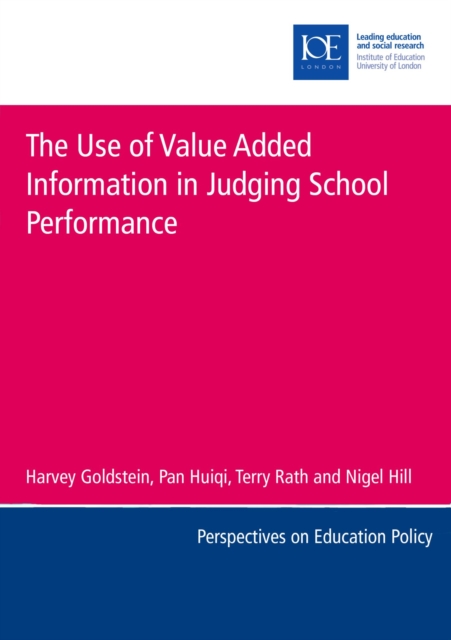
The Use of Value Added Information in Judging School Performance Paperback / softback
by Harvey (Institute of Education, University of London) Goldstein, Pan (Institute of Child Health, University College London) Huiqi, Terry (Hampshire Local Education Authority) Rath, Nigel (Hampshire Local Education Authority) Hill
Part of the Perspectives on Education Policy series
Paperback / softback
Description
It is generally agreed that a value added analysis - one which adjusts raw data to take account of pupils' achievement at the time they entered the school - is needed for fair comparisons among schools.
However, since schools do not always have such complex data, OFSTED funded a study, carried out jointly by researchers at the Institute of Education, University of London and Hampshire County Council, to investigate whether simpler, more readily available information ('proxy measures') would produce sounder comparisons.
The team analysed test scores for 11-year-olds (Key Stage 2) in Hampshire using proxy measures including gender, eligibility for free school meals, age and average Key Stage 1 scores for seven-year-olds in the same school.
However these measures still produced misleading comparisons.
The results provide little support for the routine use of such measures, either for inspection purposes or for publishing as 'league table' rankings of schools.
The researchers conclude that if either unadjusted or proxy measures are presented, anyone who wishes to use them, especially for school inspections, must fully understand their nature and limitations. The results of this research provide a basis for this.
The study also raises wider questions about how value added analyses can be used to help schools improve by providing them with informed feedback about their performance.
Information
-
Item not Available
- Format:Paperback / softback
- Pages:40 pages, 4 Figures; 11 Tables, black and white
- Publisher:Institute of Education
- Publication Date:01/02/2000
- Category:
- ISBN:9780854736072
Information
-
Item not Available
- Format:Paperback / softback
- Pages:40 pages, 4 Figures; 11 Tables, black and white
- Publisher:Institute of Education
- Publication Date:01/02/2000
- Category:
- ISBN:9780854736072






